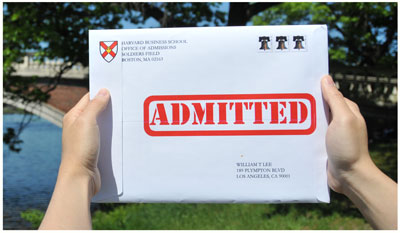What are Pepperdine's admission requirements? While there are a lot of pieces that go into a college application, you should focus on only a few critical things:
- GPA requirements
- Testing requirements, including SAT and ACT requirements
- Application requirements
In this guide we'll cover what you need to get into Pepperdine and build a strong application.
School location: Malibu, CA
This school is also known as: Pepperdine University
If you want to get in, the first thing to look at is the acceptance rate. This tells you how competitive the school is and how serious their requirements are.
The acceptance rate at Pepperdine is 62.9%. For every 100 applicants, 63 are admitted.

This means the school is
moderately selective. The school expects you to meet their requirements for GPA and SAT/ACT scores, but they're more flexible than other schools. If you exceed their requirements, you have an excellent chance of getting in. But if you don't, you might be one of the unlucky minority that gets a rejection letter.
 Want to build the best possible college application?
Want to build the best possible college application?
Pepperdine GPA Requirements
Many schools specify a minimum GPA requirement, but this is often just the bare minimum to submit an application without immediately getting rejected.
The GPA requirement that really matters is the GPA you need for a real chance of getting in. For this, we look at the school's average GPA for its current students.
The average GPA at Pepperdine is 3.61.

(Most schools use a weighted GPA out of 4.0, though some report an unweighted GPA.
With a GPA of 3.61, Pepperdine
requires you to be above average in your high school class. You'll need at least a mix of A's and B's, with more A's than B's. You can compensate for a lower GPA with harder classes, like AP or IB classes. This will show that you're able to handle more difficult academics than the average high school student.
If you're currently a junior or senior, your GPA is hard to change in time for college applications. If your GPA is at or below the school average of 3.61, you'll need a higher SAT or ACT score to compensate. This will help you compete effectively against other applicants who have higher GPAs than you.
Pepperdine Testing Policy
Each school has different requirements for standardized testing. Only a few schools require the SAT or ACT, but many consider your scores if you choose to submit them.
Pepperdine hasn't explicitly named a policy on SAT/ACT requirements, but because it's published average SAT or ACT scores (we'll cover this next), it's likely test flexible. Typically, these schools say, "if you feel your SAT or ACT score represents you well as a student, submit them. Otherwise, don't."
Despite this policy, the truth is that most students still take the SAT or ACT, and most applicants to Pepperdine will submit their scores. If you don't submit scores, you'll have one fewer dimension to show that you're worthy of being admitted, compared to other students. We therefore recommend that you consider taking the SAT or ACT, and doing well.
Pepperdine SAT Requirements
Many schools say they have no SAT score cutoff, but the truth is that there is a hidden SAT requirement. This is based on the school's average score.
The average SAT score composite at Pepperdine is a 1362 on the 1600 SAT scale.
This score makes Pepperdine Moderately Competitive for SAT test scores.

Pepperdine SAT Score Analysis
The 25th percentile SAT score is 1300, and the 75th percentile SAT score is 1440. In other words, a 1300 on the SAT places you below average, while a 1440 will move you up to above average.
Here's the breakdown of SAT scores by section:
| Section | Average | 25th Percentile | 75th Percentile |
| Math | 683 | 640 | 740 |
| Reading + Writing | 679 | 650 | 710 |
| Composite | 1362 | 1300 | 1440 |
SAT Score Choice Policy
The Score Choice policy at your school is an important part of your testing strategy.
Pepperdine has the Score Choice policy of "Highest Section."
This is also known as "superscoring." This means that you can choose which SAT tests you want to send to the school. Of all the scores they receive, your application readers will consider your highest section scores across all SAT test dates you submit.
Click below to learn more about how superscoring critically affects your test strategy.
How does superscoring change your test strategy? (Click to Learn)
For example, say you submit the following 3 test scores:
| Section |
R+W |
Math |
Composite |
| Test 1 |
700 |
300 |
1000 |
| Test 2 |
300 |
700 |
1000 |
| Test 3 |
300 |
300 |
600 |
| Superscore |
700 |
700 |
1400 |
Even though the highest total you scored on any one test date was 1000, Pepperdine will take your highest section score from all your test dates, then combine them to form your Superscore. You can raise your composite score from 1000 to 1400 in this example.
This is important for your testing strategy. Because you can choose which tests to send in, and Pepperdine forms your Superscore, you can take the SAT as many times as you want, then submit only the tests that give you the highest Superscore. Your application readers will only see that one score.
Therefore, if your SAT superscore is currently below a 1362, we strongly recommend that you consider prepping for the SAT and retaking it. You have a very good chance of raising your score, which will significantly boost your chances of getting in.
Even better, because of the Superscore, you can focus all your energy on a single section at a time. If your Reading score is lower than your other sections, prep only for the Reading section, then take the SAT. Then focus on Math for the next test, and so on. This will give you the highest Superscore possible.
Pepperdine ACT Requirements
Just like for the SAT, Pepperdine likely doesn't have a hard ACT cutoff, but if you score too low, your application will get tossed in the trash.
The average ACT score at Pepperdine is 30. This score makes Pepperdine Strongly Competitive for ACT scores.

The 25th percentile ACT score is 29, and the 75th percentile ACT score is 32.
Even though Pepperdine likely says they have no minimum ACT requirement, if you apply with a 29 or below, you'll have a harder time getting in, unless you have something else impressive in your application.
ACT Score Sending Policy
If you're taking the ACT as opposed to the SAT, you have a huge advantage in how you send scores, and this dramatically affects your testing strategy.
Here it is: when you send ACT scores to colleges, you have absolute control over which tests you send. You could take 10 tests, and only send your highest one. This is unlike the SAT, where many schools require you to send all your tests ever taken.
This means that you have more chances than you think to improve your ACT score. To try to aim for the school's ACT requirement of 30 and above, you should try to take the ACT as many times as you can. When you have the final score that you're happy with, you can then send only that score to all your schools.
ACT Superscore Policy
By and large, most colleges do not superscore the ACT. (Superscore means that the school takes your best section scores from all the test dates you submit, and then combines them into the best possible composite score). Thus, most schools will just take your highest ACT score from a single sitting.
We weren't able to find the school's exact ACT policy, which most likely means that it does not Superscore. Regardless, you can choose your single best ACT score to send in to Pepperdine, so you should prep until you reach our recommended target ACT score of 30.
SAT/ACT Writing Section Requirements
Currently, only the ACT has an optional essay section that all students can take. The SAT used to also have an optional Essay section, but since June 2021, this has been discontinued unless you are taking the test as part of school-day testing in a few states. Because of this, no school requires the SAT Essay or ACT Writing section, but some schools do recommend certain students submit their results if they have them.
Pepperdine considers the SAT Essay/ACT Writing section optional and may not include it as part of their admissions consideration. You don't need to worry too much about Writing for this school, but other schools you're applying to may require or recommend it.

Because this school is moderately selective, strong academic performance will almost guarantee you admission. Scoring a 1440 SAT or a 32 ACT or above will nearly guarantee you admission. Because the school admits 62.9% of all applicants, being far above average raises the admission rate for you to nearly 100%.
If you can achieve a high SAT/ACT score, the rest of your application essentially doesn't matter. You still need to meet the rest of the application requirements, and your GPA shouldn't be too far off from the school average of 3.61. But you won't need dazzling extracurriculars and breathtaking letters of recommendation to get in. You can get in based on the merits of your score alone.
But if your score is a 1300 SAT or a 29 ACT and below, you have a good chance of being one of the unlucky few to be rejected.
Every school requires an application with the bare essentials - high school transcript and GPA, application form, and other core information. Many schools, as explained above, also require SAT and ACT scores, as well as letters of recommendation, application essays, and interviews. We'll cover the exact requirements of Pepperdine here.
Application Requirements Overview
-
Common Application
Accepted
-
Electronic Application
Available
-
Essay or Personal Statement
Required for all freshmen
-
Letters of Recommendation
1
-
Interview
Not required
-
Application Fee
$70
-
Fee Waiver Available?
Available
-
Other Notes
Testing Requirements
-
SAT or ACT
Considered if submitted
-
Scores Due in Office
January 15
Coursework Requirements
-
Subject
Required Years
-
English
-
Math
-
Science
-
Foreign Language
-
Social Studies
-
History
-
Electives
Deadlines and Early Admissions
-
-
Offered?
Deadline
Notification
-
Regular Admission
-
Early Action
-
Yes
November 1
January 10
-
Early Decision
Admissions Office Information
If You Liked Our Advice...
Subscribe to our newsletter to get FREE strategies and guides sent to your email. Learn how to ace the SAT with exclusive tips and insights that we share with our private newsletter subscribers.
You should definitely follow us on social media. You'll get updates on our latest articles right on your feed. Follow us on all of our social networks:









